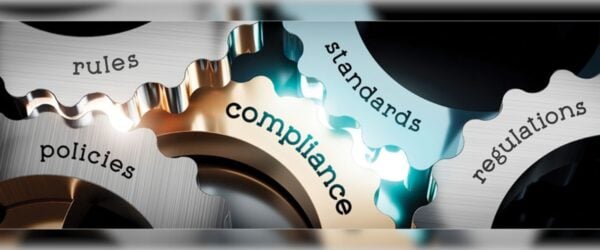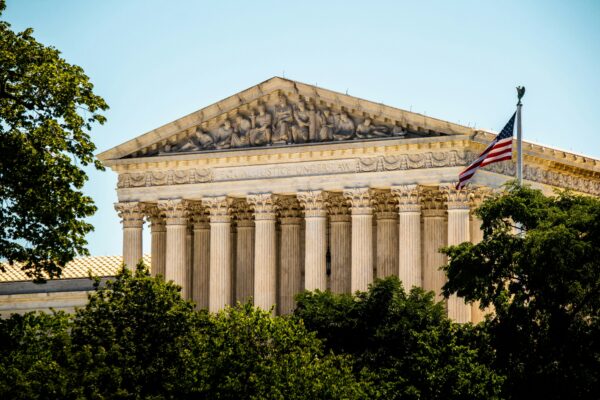September 16, 2025
The Role of the Healthcare Compliance Officer in Modern Medical Practices
- by Gene Good, JD, CEO
Table of Contents
- Introduction: The Evolution of Healthcare Compliance Leadership
- Understanding the Healthcare Compliance Officer Role
- Essential Responsibilities and Daily Functions
- Required Qualifications and Competencies
- Organizational Structure and Reporting Relationships
- Building an Effective Compliance Department
- Career Development and Professional Growth
- Challenges and Solutions
- The Future of Healthcare Compliance Leadership
- Implementation Guide for Practices
- Resources and Tools
- Bringing It All Together
- Frequently Asked Questions
Introduction: The Evolution of Healthcare Compliance Leadership
From optional advisor to C-suite executive: the transformation of the healthcare compliance officer role reflects a fundamental shift in how medical practices approach regulatory risk and operational excellence. Once considered a luxury reserved for large health systems, compliance officers have become essential guardians of organizational integrity, with their absence now cited as a contributing factor in major enforcement actions and multi-million dollar settlements.
The statistics tell a compelling story of this evolution. Today, 87% of healthcare organizations maintain dedicated compliance officers, a dramatic increase from just a decade ago when many practices viewed compliance as a part-time administrative function. This transformation accelerated following the 2025 National Health Care Fraud Takedown, which resulted in 324 defendants charged in connection with over $14.6 billion in alleged fraud, the largest healthcare fraud enforcement action in U.S. history. Organizations without robust compliance programs faced significantly higher penalties, with the Department of Justice explicitly noting inadequate compliance infrastructure as an aggravating factor in settlement negotiations.
The cost of absence has become painfully clear through recent enforcement actions. Troy Health Inc.’s August 2025 Non-Prosecution Agreement, following fraudulent Medicare Advantage enrollment practices, required not only $1.43 million in penalties but also mandatory appointment of an independent compliance officer and complete restructuring of their compliance program. Similarly, organizations operating under Corporate Integrity Agreements, now exceeding 300 active agreements monitored by the Office of Inspector General, universally require dedicated compliance officers with direct board reporting relationships.
This comprehensive guide examines every aspect of the healthcare compliance officer role, from understanding core responsibilities and required qualifications to building effective compliance departments and measuring their impact. Whether you’re a solo practitioner considering compliance options, a growing practice evaluating staffing needs, or a health system optimizing your compliance infrastructure, this analysis provides actionable insights for navigating the complex regulatory landscape of modern healthcare.
The key takeaway is unambiguous: the compliance officer has evolved from optional advisor to your practice’s first line of defense against regulatory risk, operational inefficiency, and reputational damage. In an environment where a single violation can result in program exclusion, million-dollar penalties, or criminal prosecution, the question is no longer whether you need a compliance officer, but how to structure and empower this critical role for maximum effectiveness.
Understanding the Healthcare Compliance Officer Role
Core Definition and Scope
A healthcare compliance officer serves as the organizational architect of regulatory adherence, designing and maintaining systems that ensure medical practices operate within the complex framework of federal and state healthcare laws. Daily responsibilities span from reviewing billing practices for coding accuracy to investigating potential HIPAA breaches, from conducting risk assessments to training staff on Anti-Kickback Statute requirements. Unlike the narrower focus of specialized roles, compliance officers maintain comprehensive oversight across all regulatory domains affecting healthcare delivery.
The distinction between compliance officers, privacy officers, and risk managers often creates confusion, yet understanding these differences is crucial for proper organizational design. Healthcare compliance officers maintain broad regulatory oversight encompassing all aspects of healthcare law, including billing compliance, quality standards, patient safety protocols, and fraud prevention. Privacy officers focus specifically on HIPAA Privacy Rule requirements, managing protected health information confidentiality and patient access rights. Risk managers address enterprise-wide threats beyond regulatory compliance, including malpractice exposure, business continuity, and insurance management.
The evolution from administrative role to strategic leadership position reflects healthcare’s increasing complexity and enforcement intensity. Twenty years ago, compliance officers primarily ensured documentation accuracy and policy adherence. Today’s compliance officers shape strategic decisions, evaluate new business ventures for regulatory feasibility, guide technology implementations for compliance implications, and serve as trusted advisors to boards and executive teams. This transformation parallels the healthcare industry’s shift toward value-based care, where compliance excellence directly impacts reimbursement rates, contract negotiations, and market positioning.
Industry standards now recognize compliance officers as essential members of healthcare leadership teams. The Office of Inspector General’s 2023 General Compliance Program Guidance explicitly recommends compliance officers report directly to CEOs or boards, emphasizing their independence from operational functions that could create conflicts of interest. Professional organizations like the Health Care Compliance Association have established competency frameworks defining the knowledge, skills, and ethical standards expected of modern compliance professionals.
The Business Case for Compliance Officers
The financial argument for compliance officers has shifted from cost avoidance to value creation, with documented returns on investment exceeding 598% in the first year according to recent studies. Prevention versus penalty analysis demonstrates clear economic benefits: the average healthcare compliance officer salary of $107,810 pales in comparison to potential penalties ranging from hundreds of thousands to millions of dollars for single violations. When factoring in operational improvements, efficiency gains, and competitive advantages, the business case becomes overwhelming.
Beyond direct financial impact, compliance officers protect and enhance practice reputation, a critical asset in healthcare’s relationship-driven marketplace. Patient trust, increasingly influenced by publicized enforcement actions and data breaches, directly correlates with practice growth and retention rates. Compliance officers ensure practices maintain the operational excellence and ethical standards that foster patient confidence, physician recruitment, and community standing.
The role in securing contracts and partnerships has become particularly valuable as payers and health systems increasingly require demonstrated compliance infrastructure before entering agreements. Medicare Advantage organizations, accountable care organizations, and value-based payment models all mandate robust compliance programs as participation prerequisites. Compliance officers provide the documentation, attestations, and ongoing monitoring these partnerships require, directly enabling revenue opportunities that would otherwise remain inaccessible.
Operational efficiency contributions often surprise practice leaders who view compliance as purely regulatory overhead. Effective compliance programs streamline workflows, reduce documentation redundancy, eliminate inefficient processes, and prevent the operational disruptions that accompany investigations or corrective action plans. Studies document 50-60% reductions in document management time, 90% improvements in regulatory reporting efficiency, and 45% decreases in issue resolution timeframes when compliance officers implement systematic approaches to regulatory management.
Common Misconceptions About the Position
The “just another administrative burden” myth persists despite overwhelming evidence of compliance officers’ strategic value. This misconception stems from outdated perceptions of compliance as checkbox exercises rather than comprehensive risk management and operational optimization. Modern compliance officers drive business strategy, identify revenue opportunities through proper coding optimization, prevent costly errors before they occur, and create competitive advantages through operational excellence.
The “only large practices need them” fallacy ignores both regulatory reality and practical economics. Small practices face identical regulatory requirements as large systems, often with fewer resources to manage violations or investigations. The scalability of compliance officer roles, from part-time consultants to shared services models, makes professional compliance management accessible and affordable for practices of all sizes. Solo practitioners utilizing fractional compliance officers report similar risk reduction and efficiency benefits as large systems with full departments.
The “anyone can fill this role” misunderstanding underestimates the specialized knowledge and skills effective compliance requires. Healthcare compliance encompasses intricate understanding of multiple regulatory frameworks, analytical capabilities to identify risk patterns, communication skills to influence diverse stakeholders, and judgment to balance regulatory requirements with operational realities. The 79% first-time pass rate for Certified in Healthcare Compliance examinations reflects the challenging nature of compliance expertise, while 15-25% salary premiums for certified professionals demonstrate market recognition of specialized competencies.
The “it’s purely a cost center” misconception overlooks compliance officers’ revenue generation and protection capabilities. Through proper coding optimization, compliance officers identify legitimate revenue opportunities while preventing overcoding risks. They enable participation in value-based contracts, protect against recoupments and exclusions, reduce operational inefficiencies, and prevent the reputational damage that restricts patient acquisition. Forward-thinking organizations recognize compliance as an investment in sustainable growth rather than overhead expense.
Practice Size Considerations
Solo and small practice adaptations focus on essential compliance functions through flexible delivery models. Solo practitioners might engage compliance consultants for quarterly risk assessments, policy updates, and annual training, investing $500-2,000 monthly for professional oversight without full-time overhead. Two to five physician practices often share compliance officers with other practices or utilize part-time professionals, achieving comprehensive coverage at manageable costs while maintaining independence.
Mid-size practice requirements typically warrant dedicated compliance resources, though not necessarily full-time positions initially. Practices with six to fifteen physicians often employ 0.5 to 1.0 FTE compliance officers, supplemented by administrative staff trained in compliance support functions. These practices benefit from consistent oversight, timely response to regulatory changes, and proactive risk management while maintaining cost efficiency through appropriate resource allocation.
Large group and health system expectations include comprehensive compliance departments with specialized expertise. Organizations exceeding $25 million in revenue typically maintain multiple compliance professionals with distinct focus areas: billing compliance, privacy and security, quality and patient safety, and vendor management. These larger structures enable deep expertise development, comprehensive monitoring capabilities, and rapid response to emerging risks while supporting enterprise-wide standardization and efficiency.
Scaling responsibilities appropriately requires matching compliance intensity to organizational risk profiles. High-risk specialties like pain management or oncology may require enhanced compliance resources regardless of practice size. Similarly, practices participating in value-based contracts, clinical research, or teaching programs face additional compliance obligations warranting increased investment. The key lies in conducting honest risk assessments and structuring compliance functions to address identified vulnerabilities effectively.
Essential Responsibilities and Daily Functions
Program Development and Management
Creating comprehensive compliance programs from scratch requires systematic approaches integrating regulatory requirements with operational realities. Healthcare compliance officers begin by conducting baseline assessments, identifying gaps between current practices and regulatory standards, then developing implementation roadmaps prioritizing high-risk areas. This foundational work typically spans three to six months, establishing policies, procedures, training protocols, and monitoring systems that form the compliance infrastructure.
Maintaining and updating existing programs demands continuous vigilance as regulations evolve and operations change. Compliance officers track regulatory updates through multiple channels, assess their organizational impact, and implement necessary modifications. The 2023 OIG General Compliance Program Guidance alone required practices to reassess quality oversight, cybersecurity protocols, and incentive compensation structures, demonstrating the ongoing nature of program maintenance.
Policy and procedure development extends beyond creating documents to ensuring practical implementation throughout the organization. Effective compliance officers collaborate with operational staff to develop policies that balance regulatory requirements with workflow efficiency. They create clear, actionable procedures that staff can follow consistently, using visual aids, decision trees, and quick reference guides that transform complex regulations into practical guidance.
Standard operating procedure creation standardizes compliance activities across the organization, ensuring consistency regardless of personnel changes. These procedures detail specific steps for common compliance tasks: investigating potential violations, responding to government inquiries, conducting internal audits, and managing corrective actions. Well-documented procedures protect organizations during investigations by demonstrating systematic approaches to compliance management rather than ad hoc responses to problems.
Risk Assessment and Mitigation
Annual risk assessment processes form the foundation of effective compliance programs, yet many organizations struggle with systematic implementation. Healthcare compliance officers employ structured methodologies evaluating regulatory, operational, financial, and reputational risks across all practice areas. These assessments examine billing practices, documentation standards, privacy safeguards, vendor relationships, and employee screening processes to identify vulnerabilities requiring attention.
Identifying practice-specific vulnerabilities requires understanding both regulatory requirements and operational nuances. A cardiology practice faces different risks than a primary care clinic; a practice with multiple locations encounters challenges distinct from single-site operations. Compliance officers analyze claims data for coding patterns suggesting risk, review patient complaints for systemic issues, evaluate employee turnover in high-risk departments, and assess vendor relationships for compliance gaps.
Developing mitigation strategies transforms risk identification into actionable improvement plans. Compliance officers prioritize risks based on likelihood and potential impact, then design targeted interventions addressing root causes rather than symptoms. These strategies might include enhanced training for high-error areas, technology solutions automating compliance functions, process redesigns eliminating risk points, or additional monitoring for persistent vulnerabilities.
Prioritizing compliance initiatives ensures limited resources address the most significant risks first. Healthcare compliance officers use risk matrices scoring each identified vulnerability on probability and severity scales, creating heat maps highlighting areas requiring immediate attention. This prioritization guides resource allocation, training focus, audit schedules, and technology investments, ensuring compliance efforts generate maximum risk reduction per dollar invested.
Monitoring and Auditing Activities
Training and Education Leadership
Developing role-specific training programs ensures all staff members understand their compliance responsibilities without overwhelming them with irrelevant information. Billing staff require detailed coding compliance training; clinical staff need documentation standards education; administrative personnel focus on privacy protection. Healthcare compliance officers create targeted curricula addressing the unique risks each role encounters, using real-world examples and interactive exercises that reinforce key concepts.
Conducting new employee orientation establishes compliance expectations from day one, embedding ethical behavior and regulatory adherence into organizational culture. Compliance officers design comprehensive onboarding programs covering general compliance principles, specific job-related requirements, reporting mechanisms, and consequences of non-compliance. This early investment prevents violations stemming from ignorance while demonstrating organizational commitment to compliance excellence.
Managing annual training requirements has evolved beyond basic presentations to engaging, measurable education programs. Modern compliance training incorporates multiple delivery methods accommodating different learning styles: in-person workshops for complex topics, online modules for standardized content, microlearning videos for quick refreshers, and newsletter articles for ongoing awareness. Compliance officers track completion rates, assess knowledge retention through testing, and adjust training based on violation patterns or audit findings.
Measuring training effectiveness distinguishes successful compliance programs from checkbox exercises. Healthcare compliance officers establish baseline knowledge assessments, track post-training performance improvements, monitor violation rates in trained areas, and gather feedback on training quality and relevance. This data-driven approach ensures training investments generate actual behavior change rather than mere attendance records.
Reporting and Communication
Regulatory Intelligence and Updates
Monitoring regulatory changes requires systematic approaches to tracking multiple information sources. Compliance officers subscribe to government agencies’ email alerts, monitor Federal Register publications, follow enforcement actions for emerging trends, and participate in professional associations providing regulatory updates. This multi-channel approach ensures no critical changes escape notice while filtering noise from actionable intelligence.
Interpreting new requirements demands deep understanding of both regulatory language and operational implications. Healthcare compliance officers analyze proposed and final rules, assess their organizational impact, identify implementation requirements, and develop compliance strategies. This interpretation considers not just literal regulatory text but also sub-regulatory guidance, enforcement patterns, and industry best practices that shape practical compliance expectations.
Communicating impacts to leadership transforms complex regulations into actionable business intelligence. Compliance officers prepare executive summaries highlighting key changes, operational impacts, financial implications, and implementation timelines. These communications use clear, non-technical language enabling leaders to make informed decisions about resource allocation, strategic planning, and risk acceptance.
Updating programs accordingly requires coordinated efforts across multiple departments and systems. Healthcare compliance officers develop implementation plans detailing policy changes, training needs, system modifications, and monitoring adjustments. They establish timelines ensuring compliance before effective dates, coordinate cross-functional implementation teams, and verify successful adoption through targeted audits and performance metrics.
Required Qualifications and Competencies
Educational Background
Preferred degrees and certifications for healthcare compliance officers reflect the role’s multidisciplinary nature. Bachelor’s degrees in healthcare administration, nursing, business, or legal studies provide foundational knowledge, while master’s degrees in health administration (MHA), business administration (MBA), public health (MPH), or law (JD) increasingly distinguish candidates in competitive markets. The diversity of educational pathways reflects compliance’s intersection of clinical, operational, financial, and legal domains.
Healthcare versus legal versus business backgrounds each offer unique advantages in compliance roles. Clinical backgrounds provide invaluable understanding of patient care processes, medical necessity concepts, and clinical documentation requirements. Legal training offers expertise in regulatory interpretation, investigation procedures, and enforcement defense. Business education contributes financial analysis capabilities, project management skills, and strategic planning competencies. Successful compliance officers often combine multiple educational foundations or supplement primary degrees with specialized compliance training.
The value of clinical experience cannot be overstated in healthcare compliance roles. Nurses transitioning to compliance bring practical understanding of clinical workflows, documentation challenges, and patient care priorities that pure administrative professionals may lack. This clinical credibility proves particularly valuable when implementing documentation improvements, conducting medical necessity reviews, or engaging physician stakeholders resistant to administrative mandates.
Continuing education requirements extend beyond maintaining certifications to staying current with rapidly evolving regulations and enforcement trends. Healthcare compliance officers typically complete 40 continuing education units biennially for certification maintenance, but successful professionals exceed these minimums through conference attendance, webinar participation, self-study programs, and peer learning opportunities. The pace of regulatory change demands continuous learning commitment throughout compliance careers.
Professional Certifications
The Certified in Healthcare Compliance (CHC) credential administered by the Compliance Certification Board represents healthcare’s premier compliance certification. Eligibility requires minimum one year in a full-time compliance position or 1,500 hours of compliance duties over two years, ensuring candidates possess practical experience beyond theoretical knowledge. The examination covers seven key domains: regulatory environment, compliance program administration, communication, auditing, reporting, investigations, and remediation. With 120 multiple-choice questions and 79% first-time pass rates, the CHC demonstrates specialized expertise commanding 15-25% salary premiums over non-certified professionals.
The Certified Compliance and Ethics Professional (CCEP) certification offers broader compliance expertise applicable across industries. This credential particularly benefits professionals managing compliance programs spanning healthcare and non-healthcare operations, such as health systems with diversified business lines. CCEP certification requirements parallel CHC standards, requiring similar experience levels and continuing education commitments while emphasizing ethical leadership and corporate compliance frameworks.
Healthcare Privacy Compliance (CHPC) certification addresses the growing importance of privacy and security in healthcare operations. As data breaches average $10.93 million in healthcare, organizations increasingly value specialized privacy expertise. CHPC certification focuses on HIPAA Privacy and Security Rules, state privacy laws, information governance, and breach response procedures. This certification particularly benefits smaller organizations where compliance officers manage both general compliance and privacy officer responsibilities.
Certification maintenance requirements ensure ongoing competency through continuing education and professional development. All major certifications require 40 Compliance Certification Board (CCB) continuing education units every two years, obtained through conference attendance, webinar participation, publication authorship, teaching activities, or self-study programs. This ongoing education requirement maintains currency with regulatory changes while fostering professional growth and peer networking.
Essential Skills and Competencies
Analytical and critical thinking abilities enable compliance officers to identify patterns in complex data, assess regulatory implications of operational changes, and develop creative solutions to compliance challenges. Healthcare generates massive data volumes through claims, clinical documentation, quality metrics, and operational reports. Successful compliance officers synthesize this information to identify risk indicators, predict potential violations, and design targeted interventions preventing problems before they occur.
Communication and presentation skills prove essential for compliance officers who must influence diverse audiences without formal authority. They translate complex regulations into understandable guidance for frontline staff, present risk assessments compelling board action, negotiate with regulatory agencies during investigations, and facilitate difficult conversations about violations or ethical concerns. Written communication skills ensure clear policies, comprehensive investigation reports, and persuasive business cases for compliance investments.
Project management capabilities distinguish effective compliance officers from those who struggle with implementation. Compliance initiatives typically involve multiple departments, competing priorities, tight deadlines, and limited resources. Officers must plan complex implementations, coordinate cross-functional teams, manage stakeholder expectations, track progress against milestones, and adjust approaches when obstacles arise. Formal project management training or certification increasingly appears in job requirements.
Technology proficiency requirements have expanded as healthcare digitization accelerates and compliance tools become more sophisticated. Modern compliance officers utilize data analytics platforms for audit targeting, compliance management systems for policy distribution and training tracking, communication tools for hotline management, and artificial intelligence for pattern recognition. While not requiring programming expertise, compliance officers must understand technology capabilities, evaluate vendor solutions, and guide system implementations ensuring compliance functionality.
Experience Requirements
Years of healthcare experience needed varies by organization size and complexity, but typically ranges from five to ten years for compliance officer positions. Entry-level compliance roles may require just two to three years of healthcare experience, while chief compliance officers often bring fifteen to twenty years of progressive leadership experience. This experience provides context for understanding healthcare operations, regulatory evolution, and stakeholder dynamics essential for effective compliance management.
Specific compliance background preferences increasingly favor candidates with direct compliance experience over those transitioning from related fields. Organizations value candidates who understand compliance program structures, have conducted investigations, managed audits, and implemented corrective actions. However, strong candidates from internal audit, quality improvement, risk management, or clinical documentation improvement backgrounds successfully transition to compliance roles when demonstrating transferable skills and compliance knowledge.
Leadership and management experience becomes critical for compliance officers overseeing staff or leading enterprise-wide initiatives. Organizations seek candidates who have managed teams, led cross-functional projects, influenced without authority, and navigated organizational politics. Senior compliance roles require experience presenting to boards, negotiating with executives, managing budgets, and driving cultural change, skills developed through progressive leadership responsibilities.
Industry-specific knowledge provides competitive advantages in specialized healthcare sectors. Acute care hospitals value experience with Medicare conditions of participation, quality reporting, and medical staff credentialing. Physician practices prioritize expertise in evaluation and management coding, Stark Law, and Anti-Kickback Statute. Post-acute providers seek understanding of skilled nursing regulations, home health requirements, or hospice conditions of participation. This specialized knowledge enables immediate contribution while reducing learning curves.
Soft Skills and Personal Attributes
Integrity and ethical standards form the foundation of compliance officer credibility and effectiveness. These professionals must demonstrate unwavering commitment to doing right even when facing pressure from powerful stakeholders or confronting uncomfortable truths about organizational practices. Personal integrity enables compliance officers to maintain independence, report violations objectively, and model ethical behavior throughout organizations.
Independence and objectivity allow compliance officers to assess risks honestly, investigate violations impartially, and recommend corrections without bias. This independence requires emotional intelligence to separate personal relationships from professional responsibilities, courage to deliver unwelcome messages to leadership, and resilience to withstand political pressure or retaliation attempts. Organizations must structure reporting relationships and authority to protect this essential independence.
Attention to detail distinguishes competent compliance officers from those who miss critical risk indicators or regulatory nuances. Healthcare compliance involves intricate regulations where single words determine million-dollar implications. Successful officers demonstrate meticulous documentation review, thorough investigation procedures, comprehensive audit techniques, and precise regulatory interpretation while maintaining broader strategic perspective on organizational compliance.
Ability to influence without authority represents perhaps the most challenging soft skill for healthcare compliance officers. Unlike operational leaders with direct control over staff and resources, compliance officers must persuade, educate, motivate, and inspire others to embrace compliance responsibilities. This influence stems from credibility, relationship building, communication excellence, and demonstrated value rather than organizational hierarchy or formal power.
Organizational Structure and Reporting Relationships
Optimal Reporting Structures
Direct CEO reporting benefits have become increasingly recognized as essential for compliance program effectiveness. The OIG’s 2023 General Compliance Program Guidance explicitly recommends compliance officers report directly to chief executives, ensuring unfiltered communication about compliance risks and needs. This structure provides compliance officers with necessary authority, visibility, and resources while demonstrating organizational commitment to compliance throughout the enterprise.
Board access requirements extend beyond annual presentations to include regular communication channels and emergency escalation protocols. Compliance officers should have ability to request special board meetings for critical issues, submit written reports between meetings when necessary, and maintain relationships with board compliance committee chairs. This access ensures boards fulfill their oversight responsibilities while protecting against management filtering or suppression of critical compliance information.
Independence from operations prevents conflicts of interest that compromise compliance objectivity. Healthcare compliance officers should not report to chief financial officers, revenue cycle leaders, or clinical department heads whose primary responsibilities might conflict with compliance requirements. Similarly, it should be considered that compliance officers refrain from holding operational responsibilities for billing, coding, documentation, or other functions they must audit and monitor. This structural independence protects both compliance integrity and operational leaders from perceived bias.
Dotted line relationships can enhance compliance effectiveness when properly structured. While maintaining solid line reporting to CEO or board, compliance officers may have dotted line relationships to legal counsel for regulatory interpretation, quality departments for patient safety initiatives, or corporate compliance for health system standardization. These secondary relationships facilitate collaboration and resource sharing without compromising independence or diluting authority.
Compliance Committee Integration
Committee composition and leadership should reflect organizational complexity and risk areas while ensuring diverse perspectives and expertise. Typical members include chief medical officer for clinical issues, chief financial officer for revenue cycle matters, chief information officer for technology and security, human resources leader for workforce compliance, legal counsel for regulatory interpretation, quality director for patient safety, and ethics officer for cultural initiatives. This cross-functional composition ensures comprehensive compliance coverage while fostering organizational buy-in.
Meeting frequency and agendas balance comprehensive oversight with respect for executives’ time constraints. Most organizations conduct quarterly compliance committee meetings lasting 60-90 minutes, with additional special sessions for significant issues or annual program reviews. Standardized agendas ensure consistent coverage of key topics: regulatory updates, risk assessment findings, audit results, investigation summaries, training metrics, hotline statistics, and corrective action progress.
Documentation requirements for compliance committees extend beyond basic meeting minutes to demonstrate active oversight and informed decision-making. Healthcare compliance officers prepare comprehensive pre-meeting materials enabling meaningful discussion, detailed minutes capturing decisions and action items, tracking systems monitoring follow-through on committee directives, and annual reports summarizing committee activities and effectiveness. This documentation proves invaluable during regulatory investigations or certification surveys.
Decision-making authority must be clearly defined to ensure compliance committees can effectively direct organizational compliance efforts. Committees should have authority to approve compliance policies, allocate compliance resources, mandate corrective actions, and escalate issues to full boards. Without genuine authority, compliance committees become discussion forums rather than governance bodies, undermining their effectiveness and credibility.
Relationship with Other Departments
Legal department coordination ensures consistent regulatory interpretation and coordinated response to enforcement actions. Healthcare compliance officers work closely with legal counsel to interpret new regulations, assess violation severity, manage government investigations, and determine self-disclosure strategies. However, maintaining distinction between legal and compliance functions prevents attorney-client privilege complications while ensuring operational focus on prevention rather than defense.
Human resources partnership proves essential for workforce compliance including background screening, license verification, training coordination, and disciplinary actions. Compliance officers collaborate with HR to develop sanction screening processes, investigate employee misconduct, ensure consistent policy enforcement, and protect whistleblowers from retaliation. This partnership extends to recruitment, where HR helps identify and assess compliance candidates while compliance provides input on position requirements.
Finance and billing collaboration addresses revenue cycle compliance risks representing the largest source of healthcare enforcement actions. Healthcare compliance officers work with revenue cycle leaders to establish coding compliance programs, monitor billing patterns for anomalies, investigate claim denials suggesting compliance issues, and implement corrective actions for identified problems. This collaboration requires delicate balance between revenue optimization and compliance risk management.
Clinical leadership engagement ensures medical staff understand and support compliance initiatives affecting patient care. Compliance officers partner with medical directors to develop clinical documentation standards, establish medical necessity criteria, investigate quality concerns with compliance implications, and engage physicians in compliance training. This clinical collaboration proves particularly critical for value-based contracts where quality metrics directly impact reimbursement.
Authority and Empowerment
Necessary organizational authority enables compliance officers to fulfill their responsibilities effectively without constant leadership intervention. This authority includes ability to access all organizational records and systems, interview any employee or contractor, stop or modify activities presenting immediate compliance risks, initiate investigations without prior approval, and report directly to board when necessary. Without appropriate authority, compliance officers become advisors rather than guardians, limiting their effectiveness.
Budget and resource control allows compliance officers to allocate resources addressing identified risks without competing through standard budget processes. Dedicated compliance budgets should cover staff salaries and benefits, training and professional development, technology and tools, external consultants and auditors, and investigation and remediation costs. Financial independence prevents operational leaders from constraining compliance activities through resource starvation.
Staff management responsibilities vary by organization size but typically include hiring and performance management authority for compliance team members. Healthcare compliance officers should control their departmental staffing, ensuring team members possess necessary skills and maintain independence from operational functions. This authority extends to determining staff qualifications, establishing performance expectations, conducting evaluations, and making personnel decisions protecting team integrity.
Decision-making autonomy empowers compliance officers to act decisively when confronting compliance risks or violations. This autonomy includes determining investigation scope and methods, selecting areas for audit focus, mandating corrective actions for identified deficiencies, and reporting violations to authorities when appropriate. While major decisions benefit from committee input or leadership consultation, compliance officers must have freedom to act when circumstances demand immediate response.
Red Flags in Organizational Structure
Reporting to CFO or billing manager creates inherent conflicts between revenue generation and compliance enforcement. Financial leaders naturally focus on revenue optimization, cash flow management, and profitability improvement, potentially conflicting with compliance requirements that may reduce revenues or increase costs. This reporting structure undermines compliance independence, creates appearance of bias, and limits effectiveness when investigating revenue cycle violations.
Lack of board access prevents compliance officers from fulfilling their obligation to ensure appropriate oversight of compliance risks. Without direct board communication channels, critical information may be filtered, minimized, or suppressed by management, leaving boards unaware of significant compliance exposures. This structural limitation particularly concerns regulators who expect boards to demonstrate active compliance oversight through direct compliance officer interaction.
Insufficient resources plague many compliance programs, constraining their ability to address identified risks effectively. Warning signs include compliance officers managing non-compliance responsibilities, absence of dedicated compliance staff in organizations over $10 million revenue, inability to complete annual risk assessments or audit plans, extended investigation backlogs, and reliance on outdated technology or manual processes. Resource constraints directly correlate with compliance failures and enforcement actions.
Conflicting responsibilities dilute compliance focus while creating independence concerns. Healthcare compliance officers should not simultaneously serve as privacy officers, quality directors, risk managers, or operational leaders unless organizations are too small to support separate roles. Even in smaller organizations, clear boundaries must separate compliance oversight from operational responsibilities, ensuring objectivity in monitoring and investigation activities.
Building an Effective Compliance Department
Staffing Models and Ratios
Industry benchmarks for staffing levels provide guidance for appropriate compliance resource allocation. Healthcare organizations typically employ one compliance professional per $25-50 million in annual revenue, though this ratio varies based on organizational complexity, risk profile, and service lines. High-risk specialties, teaching hospitals, and organizations under corporate integrity agreements require enhanced staffing ratios approaching one compliance FTE per $15-20 million revenue.
Centralized versus decentralized models each offer advantages depending on organizational structure and culture. Centralized models consolidate compliance expertise, standardize processes, ensure consistent interpretation, and maximize resource efficiency. Decentralized approaches embed compliance resources within operational units, fostering closer operational partnership, faster issue resolution, and enhanced local ownership. Many organizations adopt hybrid models combining central oversight with distributed resources.
Hybrid approaches balance standardization with operational integration through matrixed reporting relationships. Corporate compliance departments establish standards, provide specialized expertise, and ensure enterprise consistency while business unit compliance officers address local needs, build operational relationships, and implement corporate programs. This structure works particularly well for multi-facility health systems, integrated delivery networks, and organizations with diverse business lines.
Outsourcing considerations increasingly factor into compliance staffing decisions as organizations face resource constraints and expertise gaps. Fractional compliance officers provide cost-effective solutions for smaller practices, specialized consultants address specific risk areas or temporary needs, and managed services organizations offer comprehensive compliance program administration. Successful outsourcing requires careful vendor selection, clear service level agreements, and maintained organizational ownership of compliance outcomes.
Budget Requirements and Justification
Typical compliance department budgets range from 0.5% to 2% of organizational revenue, depending on size, complexity, and risk profile. A $50 million revenue practice might allocate $250,000-500,000 annually for compliance, covering salaries, training, technology, and external resources. Organizations under enhanced scrutiny through corporate integrity agreements or consent decrees may invest 3-5% of revenue in compliance infrastructure during remediation periods.
Cost per employee calculations help organizations benchmark compliance investments against industry standards. Healthcare organizations typically spend $200-500 per employee annually on compliance programs, including training, monitoring, and overhead allocation. This metric enables comparison across organizations of different sizes while highlighting potential under-investment in compliance infrastructure.
Technology and tool investments represent increasing portions of compliance budgets as automation becomes essential for efficiency. Compliance management systems cost $15,000-100,000 annually depending on organizational size and functionality. Additional investments include learning management systems for training delivery, data analytics platforms for audit targeting, hotline services for anonymous reporting, and exclusion screening databases for sanction monitoring.
Training and development costs extend beyond basic regulatory education to professional development ensuring team effectiveness. Organizations budget $2,000-5,000 annually per compliance professional for conference attendance, certification maintenance, professional memberships, and continuing education. This investment maintains technical competency, prevents burnout through peer networking, and demonstrates organizational commitment to compliance excellence.
Team Structure and Roles
Compliance analysts and coordinators provide operational support for compliance programs through data analysis, audit assistance, training coordination, and administrative functions. These entry-level positions offer career pathways into compliance while handling routine tasks that free senior compliance officers for strategic activities. Typical responsibilities include exclusion screening, policy maintenance, training tracking, and investigation support.
Audit and monitoring specialists bring specialized expertise in claims review, documentation assessment, and statistical sampling methodologies. These professionals design audit protocols, conduct detailed reviews, analyze findings for systemic issues, and track corrective action effectiveness. Healthcare organizations increasingly value certified professional coders (CPC) or certified internal auditors (CIA) in these roles, combining technical expertise with compliance focus.
Training and education coordinators manage the complex logistics of enterprise-wide compliance education programs. They coordinate multiple delivery methods, track completion rates, assess knowledge retention, and ensure regulatory training requirements are met. These roles require instructional design expertise, learning management system proficiency, and ability to translate complex regulations into engaging educational content.
Administrative support needs often go underestimated yet prove essential for compliance program efficiency. Administrative assistants manage hotline calls, coordinate meetings, maintain documentation systems, process exclusion screening results, and handle routine correspondence. Adequate administrative support enables compliance professionals to focus on substantive risk management rather than administrative tasks.
Performance Metrics and KPIs
Measuring compliance program effectiveness requires balanced scorecards incorporating both leading and lagging indicators. Leading indicators like training completion rates, policy acknowledgment percentages, and hotline call volumes predict future compliance performance. Lagging indicators including audit findings, violation rates, and enforcement actions reflect historical program effectiveness. Successful programs track both indicator types to identify trends and adjust strategies proactively.
Individual performance indicators for compliance professionals balance quantitative metrics with qualitative assessments. Quantitative measures include audits completed, investigations resolved, training sessions delivered, and policies updated. Qualitative assessments evaluate stakeholder satisfaction, innovation in problem-solving, leadership during crises, and contribution to organizational culture. This balanced approach recognizes compliance’s blend of technical and interpersonal requirements.
Department-wide metrics demonstrate compliance program value through risk reduction, efficiency improvement, and revenue protection. Key metrics include time to investigation closure, correction implementation rates, repeat violation frequencies, and compliance cost per risk avoided. Healthcare compliance officers increasingly use dashboards displaying real-time metrics enabling rapid response to emerging issues while demonstrating program value to leadership.
ROI demonstration strategies transform compliance from perceived cost center to recognized value creator. Compliance officers calculate prevented penalties based on violation detection and correction, document revenue preserved through coding optimization and claim accuracy, quantify efficiency gains from automated processes and standardized procedures, and measure reputational value through patient satisfaction and partner confidence. These ROI calculations, showing returns exceeding 598% annually, justify continued compliance investments.
Technology and Resource Needs
Essential compliance software forms the technological backbone of modern compliance programs. Compliance management systems like Healthicity, ComplyAssistant, and MedTrainer centralize policy management, training delivery, audit documentation, and corrective action tracking. These platforms cost $15,000-100,000 annually but generate significant efficiency gains through automation, standardization, and improved visibility into compliance activities.
Database and monitoring tools enable proactive risk identification through pattern recognition and trend analysis. Healthcare compliance officers utilize claims analytics platforms identifying coding anomalies, documentation review systems flagging quality concerns, and exclusion screening databases preventing prohibited employment. Advanced organizations implement artificial intelligence tools achieving 40% reductions in administrative workload while improving violation detection rates.
Training platforms have evolved from basic learning management systems to sophisticated engagement tools incorporating microlearning, gamification, and adaptive learning paths. Modern platforms track not just completion but comprehension, retention, and behavior change. Integration with compliance management systems ensures training assignments align with risk assessments, audit findings, and role-specific requirements.
Communication systems facilitate stakeholder engagement essential for compliance program success. Anonymous hotlines, whether managed internally or through third-party vendors, provide safe reporting channels for compliance concerns. Secure messaging platforms enable confidential investigations while maintaining documentation. Collaboration tools foster cross-functional compliance initiatives while ensuring appropriate access controls and audit trails.
Career Development and Professional Growth
Career Pathways in Healthcare Compliance
Entry-level positions and progression in healthcare compliance typically begin with compliance coordinator or analyst roles requiring two to three years of healthcare experience. These positions offer exposure to various compliance functions while developing specialized expertise. Typical progression advances through compliance specialist (3-5 years experience), compliance manager (5-7 years), senior compliance officer (7-10 years), to compliance director or chief compliance officer (10+ years). This pathway provides steady advancement opportunities with increasing responsibility and compensation.
Mid-career advancement opportunities expand as professionals develop specialized expertise or broaden their compliance portfolio. Specialization paths include becoming subject matter experts in areas like research compliance, managed care compliance, or laboratory compliance, commanding premium salaries for deep expertise. Alternatively, professionals may pursue broader roles managing enterprise compliance programs, leading system-wide initiatives, or overseeing multiple facilities. The average healthcare compliance officer with 5-10 years experience earns $93,331-$124,250, with significant variation based on specialization and geographic location.
Senior leadership trajectories position experienced compliance officers for C-suite roles including chief compliance officer, chief risk officer, or chief ethics officer positions. These roles, commanding salaries of $231,411-$430,474, require strategic thinking, board presentation skills, and ability to influence organizational culture. Some compliance officers transition to operational leadership roles, leveraging their regulatory expertise and risk management capabilities for broader organizational impact.
Consulting and advisory options provide alternative career paths for experienced compliance professionals seeking variety, flexibility, or entrepreneurial opportunities. Independent consultants charge $150-500 hourly for specialized expertise, while boutique compliance firms offer partnership opportunities. Interim compliance officer roles provide temporary leadership during transitions, investigations, or remediation periods. These alternative paths offer potentially higher earnings, greater autonomy, and exposure to diverse organizational challenges.
Professional Development Resources
Industry associations and memberships provide essential resources for professional growth and peer networking. The Health Care Compliance Association (HCCA) with over 13,000 members offers comprehensive education programs, certification preparation, and regional chapter meetings. Annual membership costs $395, providing access to educational resources, networking opportunities, and professional development tools. The Society of Corporate Compliance and Ethics (SCCE) offers broader compliance perspectives valuable for professionals managing diverse compliance portfolios.
Conference and networking opportunities facilitate knowledge acquisition and relationship building critical for career advancement. HCCA’s annual Compliance Institute attracts over 3,000 attendees for intensive education and networking. Regional conferences provide more accessible options with lower costs and travel requirements. Virtual conferences have expanded access, though in-person events remain valuable for relationship building and informal learning opportunities.
Certification programs demonstrate specialized expertise while providing structured learning frameworks. Beyond initial certifications, advanced credentials like Certified in Healthcare Research Compliance (CHRC) or Certified in Healthcare Facility Management (CHFM) differentiate senior professionals. Certificate programs from universities offer focused education in emerging areas like data privacy, cybersecurity, or value-based care compliance without full degree commitments.
Mentorship and coaching accelerate career development through personalized guidance and support. HCCA’s mentorship program matches experienced professionals with emerging compliance officers, providing career advice, technical guidance, and professional support. Executive coaching helps senior compliance officers develop leadership skills, navigate organizational politics, and manage career transitions. These developmental relationships prove particularly valuable for professionals from non-traditional backgrounds entering compliance careers.
Compensation and Benefits
Salary ranges by experience and region demonstrate significant earning potential throughout compliance careers. Entry-level compliance officers average $107,810 nationally, progressing to $113,074 with 2-3 years experience, $124,250 with 8+ years experience, and exceeding $200,000 for senior positions. Geographic variations create substantial differences: San Francisco positions average $150,312 while Southern markets may offer $30,000-40,000 less for comparable roles.
Bonus and incentive structures increasingly supplement base salaries as organizations recognize compliance’s value creation potential. Performance bonuses typically range 10-25% of base salary, tied to program metrics, risk reduction achievements, or organizational compliance scores. Some organizations offer retention bonuses recognizing the competitive market for experienced compliance professionals. Long-term incentives through equity participation become common in for-profit health systems and managed care organizations.
Benefits packages for healthcare compliance officers typically exceed standard offerings, reflecting competition for qualified professionals. Comprehensive health insurance, retirement contributions averaging 6-8% of salary, professional development allowances of $3,000-5,000 annually, flexible work arrangements, and additional paid time off for professional activities represent common enhancements. Organizations increasingly offer student loan repayment assistance addressing the educational investments compliance careers require.
Market demand trends indicate continued strong growth for healthcare compliance professionals. The Bureau of Labor Statistics projects 5% annual growth through 2033, faster than average occupational growth. Factors driving demand include expanding regulatory requirements, increased enforcement activity, growing organizational complexity, technology transformation requirements, and value-based care transitions. This sustained demand ensures career stability while maintaining upward pressure on compensation.
Building a Talent Pipeline
Recruiting strategies for compliance officers require multi-channel approaches addressing the competitive talent market. Organizations utilize professional recruiters specializing in compliance placement, post positions on HCCA and specialized job boards, leverage LinkedIn and professional networks, partner with universities offering compliance programs, and develop employee referral programs. Successful recruiting emphasizes organizational culture, growth opportunities, and compliance program maturity alongside compensation.
Developing internal candidates offers cost-effective talent acquisition while ensuring cultural fit. Organizations identify high-potential employees from internal audit, quality, risk management, or clinical departments, provide compliance education and certification support, create rotation programs exposing candidates to compliance functions, and establish clear pathways from operational to compliance roles. Internal development requires 12-18 month investment but yields engaged compliance professionals with deep organizational knowledge.
Succession planning approaches ensure continuity when compliance officers depart or advance. Organizations should identify and develop multiple potential successors, document key compliance processes and relationships, cross-train team members on critical functions, and maintain relationships with external resources for interim coverage. Succession planning proves particularly critical for smaller organizations where single compliance officer departure could create significant vulnerabilities.
Retention strategies address the 59% burnout rate threatening compliance workforce stability. Successful retention programs provide competitive compensation regularly benchmarked against market rates, invest in professional development and certification support, ensure adequate resources preventing overwhelming workloads, recognize achievements through formal and informal channels, and foster supportive team environments combating isolation. Organizations reporting lowest turnover invest 20-30% above minimum requirements in compensation and development.
Challenges and Solutions
Common Challenges Compliance Officers Face
Resource constraints and budget limitations consistently rank among top challenges facing healthcare compliance officers. With compliance budgets averaging just 0.5-2% of organizational revenue, officers must prioritize high-risk areas while accepting coverage gaps elsewhere. Limited staffing forces compliance officers to balance strategic planning with operational tasks, investigation responsibilities with training delivery, and proactive risk management with reactive problem-solving. These constraints intensify as regulatory requirements expand without corresponding resource increases.
Organizational resistance to change undermines compliance initiatives when operational staff view requirements as bureaucratic obstacles rather than patient protection mechanisms. Physicians may resist documentation requirements, billing staff might circumvent coding guidelines for productivity, and administrators could minimize compliance concerns affecting financial performance. This resistance manifests through passive non-compliance, active circumvention, or political maneuvering to marginalize compliance influence.
Keeping pace with regulatory changes challenges even well-resourced compliance programs as healthcare regulations evolve rapidly across multiple jurisdictions. The 629 discrete regulatory requirements healthcare organizations must manage change frequently through new legislation, regulatory updates, sub-regulatory guidance, and enforcement interpretation. Compliance officers must track federal regulations, state requirements, local ordinances, and payer-specific rules while translating changes into operational modifications.
Balancing enforcement with collaboration requires delicate navigation between ensuring compliance and maintaining productive relationships. Compliance officers must investigate violations involving colleagues, report deficiencies affecting powerful stakeholders, and enforce policies unpopular with staff. This enforcement role can isolate compliance officers, generating resentment that undermines program effectiveness. Yet failing to enforce standards consistently destroys credibility and invites regulatory scrutiny.
Strategies for Overcoming Obstacles
Building organizational buy-in transforms compliance from imposed burden to shared responsibility through strategic engagement and communication. Healthcare compliance officers should connect compliance requirements to organizational mission and values, demonstrate how compliance supports quality patient care, quantify financial benefits of violation prevention, celebrate compliance successes publicly, and engage operational leaders as compliance champions. This cultural approach proves more effective than enforcement alone in achieving sustainable compliance.
Demonstrating value and ROI shifts perception of compliance from cost center to value creator through systematic measurement and communication. Compliance officers should track prevented violations and associated penalties, document operational improvements from compliance initiatives, calculate time savings from standardized processes, measure revenue preserved through accurate coding, and communicate these achievements regularly to leadership. The documented 598% first-year ROI provides compelling evidence of compliance value.
Effective change management accelerates compliance adoption while minimizing disruption through structured implementation approaches. Successful strategies include piloting changes in receptive departments before enterprise rollout, involving operational staff in solution design, providing adequate training and support during transitions, acknowledging implementation challenges honestly, and adjusting approaches based on feedback. This collaborative approach generates ownership while identifying practical obstacles early.
Political navigation skills enable compliance officers to advance initiatives despite organizational dynamics and competing interests. Key strategies include building coalitions supporting compliance initiatives, understanding stakeholder motivations and concerns, framing compliance in terms resonating with different audiences, choosing battles wisely based on risk and feasibility, and maintaining professional relationships despite disagreements. Political acumen proves as important as technical expertise for compliance success.
Avoiding Burnout and Turnover
Managing workload and stress requires systematic approaches addressing the root causes of compliance officer burnout. Organizations should establish realistic expectations aligned with available resources, prioritize initiatives based on risk rather than trying to address everything simultaneously, automate routine tasks freeing time for strategic activities, delegate appropriately to team members and operational partners, and maintain boundaries between work and personal life. The 59% burnout rate demonstrates the consequences of unsustainable workload expectations.
Professional support systems provide essential resources for managing compliance role challenges. Peer networks through professional associations offer safe spaces for sharing challenges and solutions. Mentorship relationships provide guidance navigating difficult situations. Employee assistance programs offer confidential counseling for stress management. Professional coaching helps develop coping strategies and leadership skills. These support systems combat the isolation many compliance officers experience.
Work-life balance strategies preserve long-term career sustainability in demanding compliance roles. Successful approaches include setting boundaries on after-hours availability, taking vacations without email access, pursuing hobbies and interests outside healthcare, maintaining physical health through exercise and nutrition, and cultivating relationships beyond professional networks. Organizations supporting work-life balance report improved retention, performance, and job satisfaction among compliance staff.
Recognition and reward programs address the thankless nature of compliance work where success means nothing bad happened. Effective recognition includes public acknowledgment of compliance achievements, performance bonuses tied to risk reduction metrics, professional development opportunities as rewards, peer nomination programs for compliance excellence, and celebration of investigation resolutions and audit successes. Recognition costs little but significantly impacts morale and retention.
Crisis Management and Response
Handling regulatory investigations requires systematic approaches balancing cooperation with advocacy while protecting organizational interests. Healthcare compliance officers should establish investigation response protocols before needed, designate clear roles and responsibilities, maintain organized documentation systems, respond promptly to all requests, coordinate closely with legal counsel, communicate regularly with leadership about progress, and document all interactions with investigators. Preparation and professionalism during investigations significantly influence outcomes.
Managing internal crises tests compliance officers’ ability to maintain objectivity while supporting organizational stability. When major violations surface internally, compliance officers must assess severity and scope quickly, preserve evidence maintaining chain of custody, conduct thorough but expeditious investigations, determine root causes beyond surface symptoms, develop comprehensive corrective actions, and consider self-disclosure obligations. These situations require decisive action despite incomplete information and organizational pressure.
Media and public relations considerations increasingly factor into compliance crisis management as enforcement actions generate publicity. Compliance officers should coordinate with communications teams on messaging, prepare factual summaries for media response, anticipate stakeholder questions and concerns, maintain transparency while protecting confidentiality, and focus on remediation rather than blame. Mishandled communications can amplify compliance crises, damaging reputation beyond the original violation.
Whistleblower situations require careful handling to protect both reporters and organizational interests. Healthcare compliance officers must investigate all credible allegations thoroughly, maintain reporter confidentiality throughout, protect against retaliation attempts, communicate investigation outcomes appropriately, and address systemic issues revealed through reports. Effective whistleblower management encourages early problem identification while demonstrating organizational commitment to ethical behavior.
The Future of Healthcare Compliance Leadership
Emerging Trends and Technologies
AI and machine learning applications transform compliance from reactive to predictive through advanced analytics and pattern recognition. Nearly 75% of healthcare compliance professionals now use or consider AI for compliance functions, achieving 40% reductions in administrative workloads and 60% fewer documentation errors. Applications include automated coding compliance monitoring detecting patterns suggesting violations, predictive analytics identifying high-risk claims before submission, natural language processing reviewing clinical documentation completeness, and anomaly detection flagging unusual billing or prescription patterns.
Predictive analytics in compliance enables proactive risk management by forecasting violations before they occur. Machine learning models analyze historical violation patterns, identify environmental factors correlating with compliance failures, predict likelihood of specific violations by department or provider, and recommend targeted interventions preventing predicted violations. This predictive capability transforms compliance from finding problems to preventing them, fundamentally changing the compliance officer role.
Automation opportunities expand rapidly as technology vendors develop compliance-specific solutions. Automated exclusion screening eliminates manual database checking, robotic process automation handles routine audit tasks, workflow automation ensures consistent investigation procedures, and smart contracts enforce compliance requirements automatically. These automation capabilities free compliance officers from routine tasks, enabling focus on strategic risk management and complex problem-solving.
Digital transformation impact extends beyond efficiency gains to fundamentally reshape compliance approaches. Electronic health records enable real-time compliance monitoring, telehealth platforms require new compliance frameworks, digital therapeutics blur traditional regulatory boundaries, and blockchain technology promises immutable audit trails. Healthcare compliance officers must understand these technologies’ compliance implications while leveraging their capabilities for program enhancement.
Evolving Regulatory Landscape
Anticipated regulatory changes reflect healthcare’s continued evolution toward value-based care, digital delivery, and consumer focus. Expected developments include expanded price transparency requirements, strengthened information blocking enforcement, enhanced cybersecurity obligations, artificial intelligence governance frameworks, and social determinants reporting mandates. Compliance officers must position organizations for these changes while managing current requirements.
Increased enforcement trends demonstrate regulators’ growing sophistication and resources. CMS expanded Medicare Advantage audits to all contracts annually, DOJ utilizes data analytics identifying enforcement targets, states increase Medicaid program integrity efforts, and whistleblowers receive record rewards encouraging reporting. This enforcement intensity requires robust compliance programs capable of withstanding scrutiny while operating efficiently despite resource constraints.
New risk areas emerging from healthcare transformation require compliance officer attention and expertise. Digital health applications raise novel privacy and security concerns, artificial intelligence creates algorithm bias and transparency issues, value-based contracts blur traditional fraud and abuse boundaries, social media use generates professional boundary questions, and consumer-directed care challenges traditional compliance frameworks. These emerging risks require continuous learning and adaptation.
Global compliance considerations increasingly affect US healthcare organizations through international partnerships, medical tourism, clinical trials, and digital health platforms. Compliance officers must understand GDPR requirements for European patients, international anti-corruption laws affecting global partnerships, cross-border data transfer restrictions, and varying international healthcare regulations. This global perspective becomes essential as healthcare transcends traditional geographic boundaries.
The Strategic Compliance Officer
From reactive to proactive leadership represents the fundamental shift in compliance officer roles. Rather than investigating violations after occurrence, strategic compliance officers predict and prevent problems through environmental scanning identifying emerging risks, predictive modeling forecasting violation likelihood, preventive controls stopping violations before occurrence, and continuous improvement refining compliance approaches. This proactive stance positions compliance as strategic advantage rather than operational burden.
Business partnership evolution transforms compliance officers from enforcement agents to strategic advisors. Modern compliance officers participate in strategic planning ensuring compliance feasibility, evaluate business opportunities for regulatory implications, design compliant operational models supporting growth, and identify competitive advantages through compliance excellence. This partnership approach integrates compliance throughout organizational decision-making rather than imposing requirements after decisions are made.
Innovation and transformation roles position compliance officers as change agents rather than status quo defenders. Healthcare compliance officers increasingly lead digital transformation initiatives ensuring compliant implementation, design new care delivery models meeting regulatory requirements, pilot innovative approaches to traditional compliance challenges, and champion culture change embedding compliance in organizational DNA. This innovation focus attracts creative professionals viewing compliance as opportunity for positive impact.
Value creation opportunities expand as organizations recognize compliance’s business benefits beyond risk mitigation. Strategic compliance officers identify revenue opportunities through optimized coding and documentation, reduce operational costs through standardized efficient processes, enhance reputation attracting patients and partners, and enable participation in value-based contracts requiring compliance infrastructure. This value creation elevates compliance from necessary expense to strategic investment.
Preparing for Tomorrow
Skills for future success extend beyond traditional regulatory knowledge to encompass technological literacy, data analytics capabilities, change management expertise, and strategic thinking abilities. Tomorrow’s healthcare compliance officers must understand artificial intelligence and machine learning applications, analyze complex datasets identifying patterns and trends, lead organizational transformation initiatives, and think strategically about compliance’s business impact. These expanded competencies require continuous learning and professional development.
Adapting to change becomes a core competency as healthcare transformation accelerates. Successful compliance officers demonstrate intellectual curiosity exploring new concepts, flexibility adjusting approaches based on evidence, resilience recovering from setbacks and failures, and growth mindset viewing challenges as learning opportunities. This adaptability enables compliance officers to thrive despite uncertainty while leading organizations through regulatory evolution.
Continuous learning requirements intensify as regulatory complexity increases and technology advances rapidly. Healthcare compliance officers must maintain current knowledge through multiple channels: professional association education programs, vendor training on new technologies, peer learning through networking, and self-directed study of emerging trends. Organizations supporting continuous learning through time and financial resources develop more capable, engaged compliance professionals.
Building resilient programs capable of withstanding future challenges requires systematic approaches addressing people, processes, and technology. Resilient programs feature diverse skilled teams preventing single points of failure, documented processes ensuring consistency despite personnel changes, flexible frameworks adapting to regulatory evolution, and technological infrastructure supporting efficiency and effectiveness. These investments in resilience protect against disruption while enabling continued evolution.
Implementation Guide for Practices
Assessing Your Current State
Compliance officer role evaluation begins with honest assessment of current compliance resources, responsibilities, and effectiveness. Organizations should examine whether compliance responsibilities are clearly defined and assigned, if responsible individuals have appropriate authority and independence, how much time is dedicated to compliance versus other duties, and whether current approaches adequately address identified risks. This baseline assessment identifies gaps requiring attention while recognizing existing strengths to leverage.
Organizational structure review evaluates whether current reporting relationships support effective compliance management. Key questions include: Does the compliance function have appropriate independence from operations? Can compliance concerns reach senior leadership and board without filtering? Are resources adequate for identified compliance risks? Do committees and reporting structures facilitate or hinder compliance efforts? This structural analysis often reveals organizational impediments limiting compliance effectiveness regardless of individual competence.
Resource assessment quantifies current compliance investments against industry benchmarks and risk profiles. Organizations should calculate total compliance spending including salaries, training, technology, and external resources, compare per-employee compliance costs to industry standards, evaluate technology utilization and effectiveness, and assess training program completeness and engagement. This financial analysis demonstrates whether compliance resources align with organizational risk and complexity.
Gap analysis process systematically compares current state to regulatory requirements and best practices. Healthcare compliance officers or consultants should map current policies against regulatory requirements, evaluate training programs for completeness and effectiveness, assess monitoring and auditing coverage of risk areas, review investigation and corrective action processes, and identify missing program elements requiring development. This comprehensive gap analysis provides roadmap for compliance program enhancement.
Creating or Enhancing the Position
Job description development requires careful consideration of organizational needs, regulatory requirements, and market realities. Effective job descriptions clearly articulate essential responsibilities and reporting relationships, required qualifications and preferred experience, performance expectations and success metrics, compensation ranges and benefit offerings, and organizational culture and values. Well-crafted descriptions attract qualified candidates while setting appropriate expectations for role demands and opportunities.
Reporting structure design balances independence with integration, ensuring compliance officers have necessary authority while maintaining collaborative relationships. Organizations should establish direct reporting to CEO or board for independence, create dotted-line relationships facilitating collaboration, define committee participation and leadership roles, clarify decision-making authority and escalation processes, and document organizational structure in policies and charts. Clear reporting structures prevent confusion while protecting compliance independence.
Authority definition explicitly grants compliance officers power necessary for effective program management. Essential authorities include unrestricted access to records and personnel, ability to stop activities presenting immediate compliance risk, investigation initiation without prior approval, direct communication with board when necessary, and resource allocation within approved budgets. Without clearly defined authority, compliance officers cannot fulfill their responsibilities effectively.
Resource allocation ensures compliance programs have tools and support necessary for success. Organizations must provide adequate staffing for identified risks, sufficient budget for training and technology, time allocation protecting compliance from competing priorities, administrative support freeing professional time for substantive work, and professional development maintaining competency. Under-resourced compliance programs inevitably fail, exposing organizations to preventable violations and penalties.
Recruitment and Selection
Where to find qualified candidates requires multi-channel recruiting strategies addressing competitive talent markets. Organizations should post positions on HCCA and specialized compliance job boards, engage healthcare compliance recruiting firms, leverage LinkedIn and professional networks, partner with universities offering compliance programs, and develop internal candidates through training and mentorship. Successful recruiting emphasizes organizational commitment to compliance alongside competitive compensation.
Interview process and questions should assess both technical competence and cultural fit. Technical assessments might include regulatory knowledge testing, case study analysis of compliance scenarios, presentation skills through mock board reports, and reference checks verifying experience claims. Cultural assessments evaluate integrity and ethical decision-making, collaboration and influence abilities, resilience and stress management, and alignment with organizational values. Comprehensive assessment reduces hiring mistakes costly in both financial and reputational terms.
Reference and background checks verify candidate qualifications while identifying potential risks. Healthcare compliance officers require impeccable integrity, making thorough background investigation essential. Organizations should verify educational credentials and certifications, confirm employment history and responsibilities, check exclusion databases and licensure boards, assess reputation through professional references, and evaluate cultural fit through behavioral references. Investment in thorough vetting prevents future problems while ensuring compliance leader credibility.
Onboarding strategies accelerate new compliance officer effectiveness while establishing foundational relationships. Comprehensive onboarding should include orientation to organizational culture and operations, introduction to key stakeholders and departments, review of current compliance program status, identification of immediate priorities and quick wins, and establishment of communication and reporting protocols. Effective onboarding reduces time to full productivity while increasing retention likelihood.
Success Factors and Best Practices
First 90 days roadmap provides structure for new compliance officers establishing credibility and momentum. Initial priorities should include meeting all department leaders and key stakeholders, reviewing existing compliance program documentation, assessing highest risk areas requiring immediate attention, identifying quick wins demonstrating value, and developing preliminary compliance work plan. This systematic approach builds foundation for long-term success while addressing urgent needs.
Quick wins identification generates early momentum and organizational buy-in for new compliance officers. Potential quick wins include resolving backlogged investigations or corrective actions, implementing automated exclusion screening, updating outdated policies and procedures, delivering engaging compliance training, and establishing regular compliance communications. These early successes build credibility while demonstrating compliance program value.
Long-term success strategies position compliance officers for sustained effectiveness despite evolving challenges. Key strategies include building strong stakeholder relationships before needing them, maintaining independence while fostering collaboration, demonstrating value through metrics and communication, investing in team development and succession planning, and staying current with regulatory and technology evolution. These strategies ensure continued effectiveness as organizations and regulations evolve.
Avoiding common pitfalls prevents new compliance officers from stumbling over predictable obstacles. Common mistakes include trying to change everything immediately, operating in isolation without stakeholder engagement, focusing on perfection over progress, neglecting self-care leading to burnout, and compromising independence for political convenience. Awareness of these pitfalls enables proactive avoidance while maintaining focus on sustainable compliance program development.
Doctor’s Management Support Services
Compliance officer recruitment assistance helps organizations navigate competitive talent markets to secure qualified professionals. Doctor’s Management provides candidate sourcing through professional networks, position description development and market analysis, candidate screening and assessment, interview coordination and support, and onboarding program development. This specialized recruitment expertise reduces time-to-fill while improving hiring success rates.
Interim compliance officer services provide temporary leadership during transitions, investigations, or program development. Doctor’s Management’s experienced consultants serve as interim compliance officers maintaining program continuity, conducting comprehensive program assessments, implementing urgent corrective actions, mentoring internal staff for succession, and transitioning smoothly to permanent officers. These interim services prevent compliance gaps while allowing thoughtful permanent hiring.
Training and development programs build compliance competency throughout organizations. Doctor’s Management offers compliance officer certification preparation, customized training for specific risk areas, leadership development for compliance professionals, board and committee education programs, and ongoing regulatory update sessions. These educational services ensure organizations maintain current knowledge while developing internal compliance capabilities.
Ongoing support and consultation provides expert guidance without full-time overhead. Doctor’s Management’s retainer and project-based services include quarterly compliance program assessments, annual risk assessment facilitation, investigation support and guidance, policy and procedure development, and regulatory interpretation assistance. This flexible support model provides expert resources when needed while maintaining cost efficiency.
Resources and Tools
Professional Organizations
Health Care Compliance Association (HCCA) serves as the primary professional association for healthcare compliance officers, offering comprehensive resources supporting career development. With over 13,000 members, HCCA provides annual Compliance Institute and regional conferences, certification programs and examination preparation, local chapter meetings and networking events, compliance publications and online resources, and mentorship programs connecting experienced and emerging professionals.
Society of Corporate Compliance and Ethics (SCCE) offers broader compliance perspective valuable for healthcare professionals managing diverse compliance portfolios. SCCE resources include Certified Compliance and Ethics Professional certification, annual Compliance and Ethics Institute, international compliance perspectives, cross-industry best practices, and executive leadership development programs. Healthcare compliance officers benefit from SCCE’s broader business compliance focus.
American Health Law Association (AHLA) provides specialized legal and regulatory education for healthcare compliance professionals. AHLA offerings include in-person and virtual educational programs, practice group communities for specialized topics, Health Law Connections publication, speaking and writing opportunities, and advocacy on regulatory issues. While legally focused, AHLA resources prove valuable for compliance officers navigating complex regulations.
Regional compliance associations offer localized networking and education opportunities with lower costs and travel requirements. These associations provide monthly or quarterly educational meetings, local regulatory update sessions, peer networking and support groups, reduced registration fees for events, and connections to local compliance resources. Regional participation complements national association membership.
Educational Resources
Certification program information guides professionals pursuing compliance credentials enhancing career prospects. Key certifications include Certified in Healthcare Compliance (CHC) for comprehensive healthcare focus, Certified Compliance and Ethics Professional (CCEP) for broader business application, Certified in Healthcare Privacy Compliance (CHPC) for privacy specialization, Certified in Healthcare Research Compliance (CHRC) for research focus, and continuing certification maintenance requirements. Professional certification demonstrates expertise while providing structured learning frameworks.
Online training platforms deliver flexible, cost-effective compliance education accessible regardless of location. Leading platforms include HCCA’s online training library with hundreds of sessions, Compliance Certification Board’s examination preparation courses, university-based certificate programs in healthcare compliance, vendor-specific training on compliance technologies, and free webinars from law firms and consultancies. Online learning enables continuous education despite busy schedules and limited budgets.
Industry publications keep compliance professionals current with regulatory changes and best practices. Essential publications include Report on Medicare Compliance for regulatory updates, Compliance Today for practical implementation guidance, Journal of Health Care Compliance for in-depth analysis, Corporate Compliance Insights for cross-industry perspectives, and specialized newsletters from law firms and consultancies. Regular reading maintains currency while identifying emerging trends.
Regulatory guidance documents provide authoritative interpretation of compliance requirements and expectations. Primary sources include OIG Compliance Program Guidance documents, CMS Medicare manuals and transmittals, OCR HIPAA guidance and enforcement examples, DOJ False Claims Act enforcement policies, and state-specific regulatory bulletins. Direct access to regulatory sources ensures accurate interpretation without intermediary filtering.
Networking and Support
LinkedIn groups and communities connect compliance professionals virtually for knowledge sharing and peer support. Active healthcare compliance groups include Healthcare Compliance Professionals Network with over 20,000 members, HCCA Official LinkedIn Group for association members, Chief Compliance Officer Network for senior leaders, specialized groups for privacy, research, and other focus areas, and regional groups for local connections. Virtual networking expands professional connections beyond geographic limitations.
Local chapter meetings provide face-to-face networking opportunities building deeper professional relationships. Chapter activities typically include monthly educational presentations on timely topics, roundtable discussions of common challenges, facility tours showcasing best practices, social events fostering informal connections, and mentorship matching programs. Local participation creates support networks valuable during challenging situations.
Mentorship programs accelerate professional development through personalized guidance from experienced professionals. Formal programs like HCCA’s mentorship initiative match mentors and mentees based on experience and interests, establish structured meeting schedules and topics, provide resources supporting productive relationships, track progress toward development goals, and celebrate successful completions. Mentorship relationships often continue beyond formal program participation.
Peer networking opportunities emerge through various channels connecting compliance professionals for mutual support. Opportunities include compliance committee participation within organizations, cross-industry compliance forums in local markets, vendor user groups for technology platforms, alumni networks from certification programs, and informal coffee meetings with area colleagues. Strong peer networks provide safe spaces for sharing challenges while learning from others’ experiences.
Bringing It All Together
The evolution of the healthcare compliance officer from optional administrative function to essential strategic leader reflects healthcare’s increasing complexity and regulatory intensity. With 87% of healthcare organizations now maintaining dedicated compliance officers and documented returns exceeding 598% in the first year, the business case for professional compliance management has never been stronger. Organizations attempting to navigate today’s enforcement environment without adequate compliance leadership face existential risks from penalties, exclusions, and reputational damage that far exceed the investment required for effective compliance programs.
The comprehensive nature of modern healthcare compliance demands professionals with diverse competencies spanning regulatory knowledge, business acumen, technological literacy, and leadership capabilities. As this analysis demonstrates, successful compliance officers must master technical requirements while building collaborative relationships, influence without formal authority, and balance enforcement with engagement. The projected 5% annual growth in compliance positions through 2033, combined with 15-25% salary premiums for certified professionals, creates attractive career opportunities for those willing to embrace these challenges.
Looking ahead, healthcare compliance officers will continue evolving from reactive enforcers to proactive strategic partners. Artificial intelligence and predictive analytics will transform violation detection and prevention. Value-based care models will blur traditional compliance boundaries. Digital health innovations will create novel regulatory challenges. Through these changes, the fundamental mission remains constant: protecting patients, preserving organizational integrity, and ensuring sustainable healthcare delivery.
For medical practices considering their compliance infrastructure, the path forward is clear. Assess your current compliance state honestly, structure the compliance function for independence and effectiveness, invest in qualified professionals with appropriate authority and resources, measure and communicate compliance value consistently, and adapt continuously as regulations and risks evolve. Whether through dedicated staff, shared resources, or strategic outsourcing, every healthcare organization needs professional compliance leadership.
Doctor’s Management stands ready to support your compliance journey through recruitment assistance, interim leadership, program development, and ongoing consultation. Our experienced team understands the challenges medical practices face in building effective compliance programs while maintaining operational efficiency. Contact us to discuss how we can help transform compliance from regulatory burden to strategic advantage, ensuring your practice thrives in an increasingly complex healthcare environment while maintaining the highest standards of integrity and patient care.
Frequently Asked Questions
Mid-size practices (4-15 physicians) often benefit from part-time or shared compliance officers who provide regular oversight without full-time expense. These arrangements might involve 0.25 to 0.5 FTE allocation, depending on specialty risk factors and payer mix. Practices participating in value-based contracts, conducting clinical research, or operating in high-risk specialties may require enhanced compliance resources regardless of size.
Larger practices (15+ physicians) and those exceeding $25 million in annual revenue typically warrant dedicated compliance officers. The complexity of managing multiple providers, locations, and service lines creates compliance risks requiring consistent, professional oversight. Organizations under Corporate Integrity Agreements or with history of violations always require dedicated compliance resources regardless of size.
Healthcare compliance officer salaries vary significantly based on experience, location, organization size, and certification status. Entry-level positions average $107,810 nationally, with ranges from $98,949 to $108,254 depending on specific market and employer. Professionals with 2-3 years of experience earn $109,703 to $113,074, while those with 8+ years command $124,250 to $131,093. Senior compliance officers and directors earn $127,736 to $157,726, with chief compliance officers reaching $231,411 to $430,474 in large health systems.
Geographic variations create substantial salary differences. West Coast markets, particularly San Francisco ($150,312) and San Jose ($147,421), offer premiums of 30-40% above national averages. Major metropolitan areas like New York, Boston, and Chicago also provide above-average compensation. Southern and rural markets typically offer lower salaries, though cost of living adjustments may offset differences.
Certification impacts compensation significantly, with CHC-certified professionals earning 15-25% premiums over non-certified peers. Additional factors affecting salary include organization type (for-profit typically pays more), specialty focus (research compliance commands premiums), and performance bonuses ranging from 10-25% of base salary.
Problematic combinations include compliance officers serving as chief financial officers, revenue cycle directors, or billing managers, as financial responsibilities conflict with compliance objectivity. Similarly, compliance officers should not lead clinical departments they must audit, manage human resources while investigating employee conduct, or oversee operations creating compliance risks they must monitor.
Organizations considering dual roles should ensure adequate time allocation for compliance (minimum 25-50% depending on organization size), clear delineation between responsibilities, independent reporting for compliance matters, and additional resources during high-demand periods like investigations or audits. The key is maintaining compliance independence while leveraging synergies between related functions.
Justifying compliance officer investment requires demonstrating tangible returns exceeding costs. Start with the documented 598% first-year ROI from comprehensive compliance programs, translating this into dollar figures based on your organization’s revenue. A $50 million practice could expect $300,000-500,000 in annual benefits from prevented violations, operational efficiencies, and revenue optimization against $150,000-200,000 in total compliance officer costs.
Present specific risk scenarios illustrating potential costs without compliance oversight. A single billing violation can trigger penalties of $100,000-1,000,000, excluded provider employment penalties average $300,000-500,000, and HIPAA breaches average $10.93 million including fines, legal costs, and reputation damage. Compare these potential losses to compliance officer salaries, showing how preventing even one violation justifies multiple years of compliance investment.
Highlight operational benefits beyond risk mitigation. Compliance officers generate revenue through coding optimization identifying missed legitimate charges, enable participation in value-based contracts requiring compliance infrastructure, reduce operational costs through standardized efficient processes, and improve staff retention by ensuring ethical workplace culture. These benefits often exceed risk prevention value, transforming compliance from insurance to investment.
Benchmark your compliance spending against industry standards, demonstrating under-investment relative to peers. Healthcare organizations typically spend 0.5-2% of revenue on compliance, or $200-500 per employee annually. If your organization falls below these benchmarks, you’re accepting unnecessary risk that boards have duty to address. Present compliance investment as fulfilling fiduciary responsibility rather than discretionary expense.
Privacy officers focus specifically on protecting patient information under HIPAA Privacy Rule and state privacy laws. Their responsibilities include managing patient rights requests, ensuring minimum necessary standards, overseeing business associate agreements, conducting privacy risk assessments, and investigating breaches. Privacy officers typically handle patient complaints about information handling, coordinate with marketing on HIPAA-compliant communications, and manage relationships with health information exchanges.
The roles overlap in several areas including policy development, workforce training, and incident investigation. Both require understanding of healthcare operations, regulatory requirements, and risk management principles. In organizations large enough to separate roles, compliance and privacy officers should collaborate closely while maintaining distinct responsibilities. Smaller organizations combining roles should ensure adequate time and resources for both functions, as privacy violations represent significant portion of healthcare enforcement actions.
Investigation authority proves particularly critical, including ability to initiate investigations without prior approval, interview any employee or contractor, preserve evidence and documentation, and engage external resources when necessary. This independence ensures thorough, objective investigations without interference from parties potentially implicated in violations.
Reporting authority must include direct access to CEO and board, ability to request special meetings for urgent issues, and protection from retaliation for raising concerns. The 2023 OIG Compliance Program Guidance emphasizes compliance officers should report directly to CEO or board, not through intermediaries who might filter or suppress critical information.
Budget authority within approved parameters enables compliance officers to respond quickly to emerging needs without bureaucratic delays. This includes engaging consultants for specialized expertise, purchasing technology tools for efficiency, providing additional training for identified risks, and conducting expanded audits when warranted. Without appropriate authority, compliance officers become advisors rather than guardians, limiting their effectiveness in protecting organizations.
Benefits of outsourcing include access to specialized expertise without full-time costs, scalability adjusting support based on needs, reduced overhead for benefits and training, objective external perspective on risks, and immediate availability without recruitment delays. For small practices, outsourcing provides professional compliance management otherwise unaffordable.
Limitations include potential lack of organizational knowledge requiring learning curves, divided attention among multiple clients, possible cultural misalignment with organization, questions about authority and accountability, and challenges maintaining consistency with rotating consultants. Regulatory agencies may scrutinize outsourced arrangements more closely, requiring clear documentation of responsibilities and oversight.
Best practices for successful outsourcing include clearly defining scope, responsibilities, and deliverables; ensuring consultants have appropriate authority and access; maintaining internal ownership and accountability; requiring regular on-site presence for relationship building; and establishing clear communication and reporting protocols. Organizations should view outsourcing as partnership rather than abdication, maintaining active engagement in compliance program oversight.
Investigation procedures should follow consistent methodology regardless of violation severity or personnel involved. This includes documenting all investigation steps and findings, interviewing relevant parties with appropriate documentation, determining root causes beyond surface violations, assessing scope including potential systemic issues, and quantifying potential financial and regulatory impact.
Disclosure decisions require careful consideration of legal obligations, strategic advantages, and potential consequences. Many violations require mandatory reporting within specific timeframes. Voluntary disclosure through OIG Self-Disclosure Protocol or CMS Voluntary Self-Referral Disclosure Protocol may reduce penalties significantly. Legal counsel should guide disclosure decisions, balancing cooperation credit against admission risks.
Protection mechanisms for compliance officers include whistleblower protections under False Claims Act, employment agreements clarifying investigation obligations, professional liability insurance coverage, and documented policies supporting independent investigation. Organizations retaliating against compliance officers for appropriate violation reporting face additional penalties and scrutiny. Compliance officers should maintain detailed documentation of discovery, investigation, and reporting activities for their protection.
Risk reduction indicators provide outcome-based effectiveness measures: reduced external audit findings, decreased claim denials for compliance reasons, fewer employee compliance-related terminations, limited regulatory inquiries or investigations, and successful certification surveys. These lagging indicators reflect historical program performance while validating compliance officer effectiveness.
Financial impact metrics demonstrate compliance value creation beyond risk mitigation. Track prevented violations and associated penalty avoidance, revenue recovered through coding optimization, operational cost savings from process improvements, reduced external consultant spending through internal capability building, and insurance premium reductions from improved risk profiles. ROI calculations should show returns exceeding 200% annually for effective programs.
Qualitative assessments capture dimensions quantitative metrics miss. Evaluate stakeholder satisfaction through surveys and feedback, organizational culture shifts toward proactive compliance, innovation in solving compliance challenges, leadership during crisis situations, and professional development of compliance team members. 360-degree feedback from board members, executives, operational leaders, and compliance staff provides comprehensive perspective on compliance officer performance. Regular assessment using these multi-dimensional measures ensures compliance officers deliver value while identifying development opportunities.

























